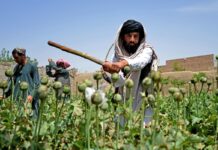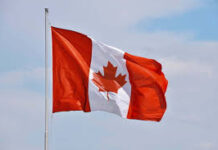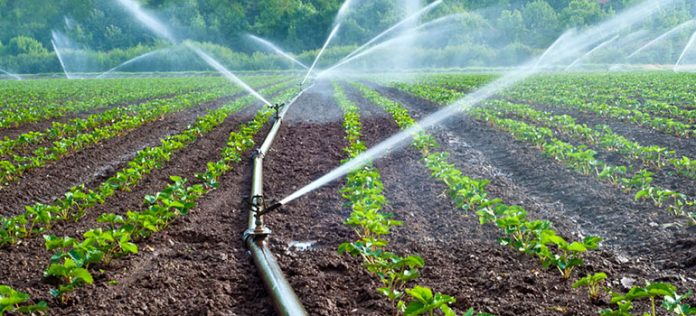By Shavkat Khamrayev
Just a decade ago, during meetings with international experts, an alarming question was raised: How will climate change, reduced rainfall, and the melting of ancient glaciers affect Central Asia?
It was predicted that by 2025, the region’s water resources could decrease by 5%, and by 2030 – by 10%, leading to water shortages for the population.
The President of Uzbekistan has set a crucial task for the water management system – to provide people with water and offset the deficit caused by climate change and other factors.
Thanks to ongoing measures, in 2023 the country saved 7 billion cubic meters of water, in 2024 – 8 billion, and in 2025 this figure is expected to reach 10 billion cubic meters. This matches the volume of water shortages previously forecast. By 2030, Uzbekistan plans to save up to 15 billion cubic meters annually.
Once, in Nukus, because of groundwater and salts, even grass barely grew along the roadsides – let alone flowers. At the initiative of the President of Uzbekistan, in 2017 the concrete lining of the Dustlik Canal, which passes through the city, began. The phased construction of the “Nukus” collector also started. In a short time, tangible results were achieved: water seepage in the canal decreased, and groundwater levels dropped. Today, Nukus streets are unrecognizable – blooming with flowers.
Previously, due to excessively high groundwater levels in Gulistan, there was even discussion about relocating the administrative center of the Syrdarya Region to the city of Yangiyer. The country’s leader personally took control of the issue, and the necessary funds were found. As a result of reconstructing and lining the canal passing through Gulistan, water seepage decreased, vertical drainage wells were built, irrigation and reclamation work was carried out, and groundwater levels significantly dropped.
There are many such examples. In Urgench, thanks to lining the Shovot Canal, and in the almost swampy Naryn district, through the construction of vertical wells, long-standing problems associated with high groundwater levels were resolved.
On the President’s initiative, major investments have been attracted into the water management sector. With the participation of the Islamic Development Bank (IsDB), the Toshsoqa canal system in Khorezm Region is being modernized; with World Bank funds, canals in the Fergana Valley are being reconstructed; in cooperation with the Asian Development Bank – in Bukhara Region; and through IsDB loans – in Surkhandarya Region. As a result, groundwater levels in these areas have dropped by 0.3-0.5 meters compared to long-term averages, and canal efficiency has significantly improved.
Most importantly, water supply to irrigated lands has improved. In many places, thousands of small pumping stations are no longer needed, as water now flows by gravity. This has saved electricity and operating costs.
On November 29, 2023, during a video conference on rational water use and reducing water losses, the head of state stressed the importance of lining canals and ditches.
According to calculations, irrigation systems with natural (unlined) channels lose about 14 billion cubic meters of water annually (36%) without any economic benefit. That is why 2024 was declared a “breakthrough year” for canal lining in the water management sector. From the state budget, 676.7 billion soums were allocated to reconstruct 555 km of canals. Clusters and farms rehabilitated and lined 13,500 km of internal irrigation networks.
These are not just dry numbers – behind them lies the well-being of the people and abundance on every dastarkhan (Uzbek family table).
Until recently, there was a mistaken belief that drip irrigation was unsuitable for Uzbekistan’s conditions, and that in our hot climate the traditional method of furrow irrigation was optimal. However, out of 4.3 million hectares of irrigated land, about half have been covered by water-saving technologies in the past seven years.
To support this policy, over the same period, seven Presidential decrees and resolutions were issued to promote and develop water-saving solutions. Previously, equipment and components had to be imported. In 2019, there were only two or three enterprises in the country producing such technologies; today there are more than 60. Localizing production has reduced costs by 20% per hectare and ensured local service availability. In 2024 alone, the use of water-saving technologies saved 2.5 billion cubic meters of water.
If it were not for the President’s requirements and the provision of loans and subsidies, we might still be telling ourselves that certain types of water-saving technologies supposedly do not suit our conditions.
We now face an ambitious goal – by 2030, to equip all irrigated lands in the republic with water-saving technologies. Only a few years remain to achieve this target.
Uzbekistan is taking the lead among regional countries in introducing water-saving technologies and modern methods of water resource management.
“We call for united efforts to launch a Regional Program for the Introduction of Water-Saving Technologies in Central Asia,” – declared the President of our country, speaking at the Samarkand International Climate Forum.
Incidentally, thanks to the favorable conditions created, a new movement has emerged this year among leading domestic farmers: more and more farms are adopting solar panels to support the use of water-saving technologies.
Frankly, about 70% of all budgetary funds allocated to the water sector are spent on electricity – that is nearly 7 billion kWh used to operate around 1,700 pumping stations.
Due to the measures taken, electricity consumption decreased from 8.3 billion kWh in 2017 to 6.5 billion kWh in 2024.
At a video conference on November 7, 2024, regarding the rational use of water and energy resources and reducing losses in agriculture, the head of state noted that in recent years, large pumping stations such as Karshi, Amu-Bukhara, and Amu-Zang have been modernized with $1 billion in funding. However, due to the wear and tear of medium and small pumps, the cost of water continues to rise.
Given these issues, new priorities were set during the meeting, and 2025 was declared the Year of Increasing Pumping Station Efficiency in the water sector.
As the President noted, digitalization is the only path to radical change in the field: it ensures transparency, accuracy, and prevents corruption.
In line with the tasks set out in the “Uzbekistan – 2030” Strategy and the Concept for the Development of the Water Sector of the Republic of Uzbekistan for 2020–2030, large-scale work on digitalization has been carried out, and a number of technological solutions have been implemented.
For example:
– at 13,174 water-gauging stations of reservoirs and irrigation systems, “Smart Water” systems have been installed for real-time water monitoring;
– at 10,296 reclamation wells, Diver devices monitor groundwater levels and soil salinity;
– at 1,748 pumping stations, devices to control water consumption have been installed;
– 96 large water management facilities have been converted to automatic control.
A Center for Water Sector Digitalization has been established under the Ministry of Water Management, along with the information systems “Suv Hisobi” (“Water Accounting”) and “Nasos Stansiyalari” (“Pumping Stations”).
The Presidential Resolution “On Priority Measures to Implement the Program ‘From Poverty to Prosperity’” dated September 23, 2024, is a vivid example of the state’s care for the people. The document allocates 3.2 trillion soums to improve irrigation of household plots, ensure stable electricity supply, enhance internet quality, repair internal roads, and modernize other infrastructure in 1,000 of the most needy mahallas (neighborhoods).
The President of Uzbekistan stands by the idea that people should live well not tomorrow, but today.
As part of the “From Poverty to Prosperity” Program in 2025, large-scale projects are being implemented:
– at 864 facilities, 1,882 km of irrigation networks were lined at a cost of 1.1 trillion soums;
– 185 km of flume networks and 380 km of pipelines were built;
– 818 irrigation wells were drilled;
– 421 pumping units were installed.
As a result, water supply has improved on 77,500 hectares of household lands in 467,000 homes in mahallas with water shortages.
Yes, life has its difficulties, and times can be different – sometimes water is scarce, sometimes abundant. But one thing is certain: the people of Uzbekistan deserve peace and stability. Fortunately, they have a leader who thinks about everyone living on this land. Thanks to the President’s far-sighted policy, the country has taken the path of sustainable development, and the life of its people is becoming better year by year.
The author is Minister of Water Management of Uzbekistan.
























oaom1t